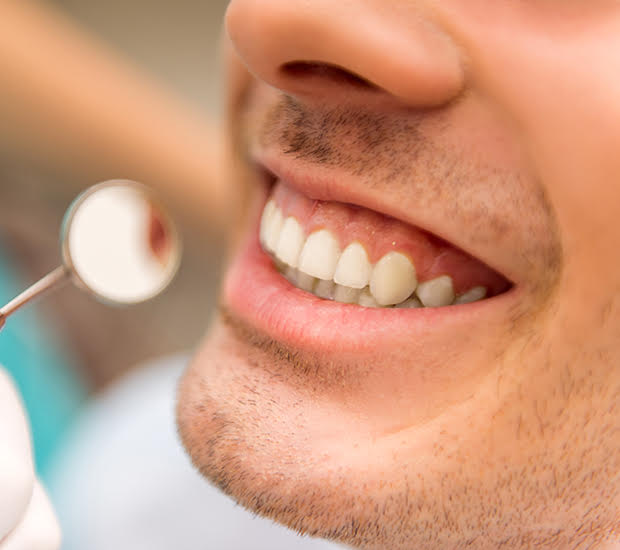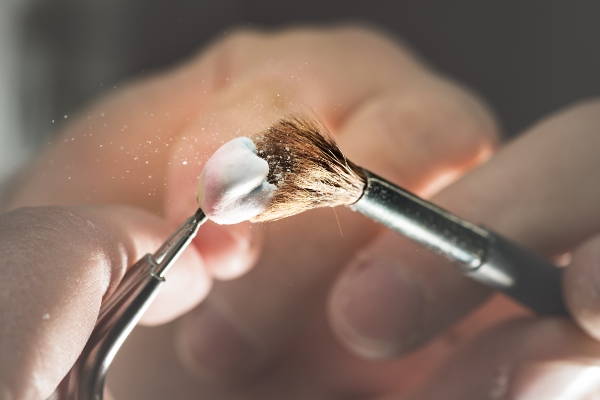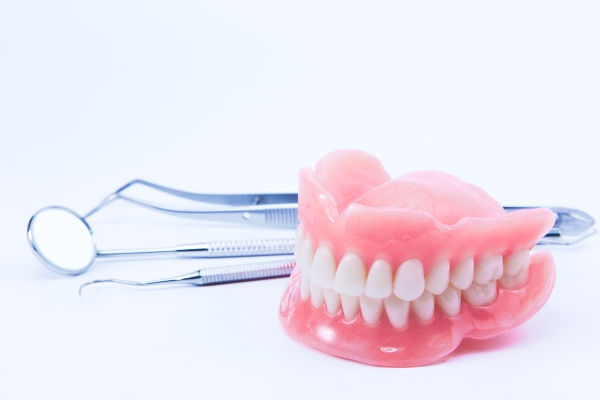PeriodonticsTucson, AZ
Millions of people in the United States suffer from gum disease and need periodontics treatment. Periodontics is a branch of dentistry that deals with inflammatory diseases affecting the gums and tooth-supporting structures. When patients visit the cosmetic dentist, they will get different treatment solutions that not only can be aesthetically pleasing but also relieve symptoms and heal the gums.
Changes/Cancellation? - You must CALL at least 48 business hours prior to your scheduled appointment and speak with a team member to avoid charges.
We cannot accept appointment change requests via voicemail, email or text for your protection.
Signs of gum disease
Swollen, bleeding or inflamed gums can be indications of gum disease. It is common for this to occur occasionally after eating anything that irritates the gums or brushing vigorously. However, if this happens regularly, then it is a case of gum disease. Other symptoms include bad breath, painful chewing, teeth sensitivity, loose teeth or gum recession. Patients should visit the dental office once they discover these symptoms.
Signs of gum disease
Gum disease may cause irritation and bleeding in its early stages, called gingivitis. There may also be minimal discomfort. Without treatment, the disease will progress, and the gum will begin to pull back from the tooth (gum recession).
Gum recession creates pockets between the teeth and the gums, exposing the tooth and the root structure. The exposure makes the tooth and roots more vulnerable to infection because bacteria can form and accumulate around the area. This may eventually cause bone loss. When combined with gum recession, bone loss can quickly lead to tooth loss. According to the American Dental Association, gum disease is the leading cause of tooth loss in adults.
Causes of gum disease
Bacteria is the main cause of gum disease. Lingering bacteria on the teeth form plaque and tartar. When plaque builds up between the teeth and gums, gingivitis can occur. The best way to stop plaque is to maintain proper oral hygiene by brushing, flossing and visiting the dentist regularly.
Certain factors can also predispose someone to the risk of gum disease. This includes smoking, diabetes, certain medications and genetics. When blood flow is low or constricted, the risk of disease increases. This is what puts pregnant women and diabetics at particular risk of gum disease.
Check out what others are saying about our Periodontics services on Google: Periodontics Tucson
Treating gum diseases
There are multiple periodontics treatments, depending on the patient and the extent of the condition. The dentist will recommend appropriate treatment after checking the teeth and gums to determine the cause of the problem. Patients are advised to look for initial signs of gum disease and book an appointment immediately so the dentist can treat the problem with minimally invasive procedures. Once the disease has reached an advanced stage, healing may require extensive procedures.
This basic step in treating gum disease is to perform deep cleaning. This entails removing plaque and tartar deposits from the teeth and gums. After cleaning the bacteria, the gums will start to heal naturally. If the plaque deposit is only on the edge of the gumline, regular teeth cleaning is enough. However, if plaques are trapped between the gums and teeth, scaling and root planing will be necessary. This means the dentist will scrape the plaque from the teeth under the gums.
After a diagnosis, periodontics treatment is crucial to oral health and overall wellbeing. In the case of advanced gum recession, conventional periodontal treatment usually entails extensive and invasive surgery, stitches and supervised aftercare. The alternative is the Laser Assisted New Attachment Procedure (LANAP). This laser procedure has many advantages over traditional procedures and even allows patients on a strict prescription routine to undergo periodontics treatment without stopping their medications.
Gum surgery
With traditional gum surgery, the dentist will make incisions in the gums and use a scalpel to fold the gums backward. This will expose the tooth roots and the jawbone. Then, the dentist will clean tartar and debris from the tooth roots and examine the bone supporting the teeth. If a bone defect is present, they will reshape the bone or place bone graft material. Finally, they will suture the gums to their original state.
Dentists may reduce gum tissue surgically to maintain a periodontal pocket that is 3mm or less to allow effective cleaning. For instance, if the patient has 6mm pocket reading, the dentist will remove 3mm of gum tissue to form a 3mm pocket. Restoring the gums sometimes require gum grafting. This works by transferring tissue from the mouth roof or other areas to the gums to begin regeneration. If bone loss occurs, the dentist may perform a bone graft to restore and hold the tooth.
LANAP
In LANAP gum therapy, no scalpels and sutures are needed. The dentist will place the laser fiber (PerioLase MVP-7) through the teeth and gums to reach the periodontal pocket. The laser then gets rid of infected tissues in the gum pockets and kills the bacteria. Using an ultrasonic device, the dentist will clean the tooth roots. This forms a clot seal that promotes natural healing. The major difference is that LANAP encourages tissue regeneration to reduce gum pocket depths, while conventional surgery removes infected tissues to achieve a healthy gum pocket depth.
The same PerioLase used in LANAP can be applied when treating dental implants affected by inflammation. The inflammation usually destroys the soft tissues and the bone and may lead to implant failure. Treating the affected area with PerioLase also kills the bacteria responsible for inflammation and promotes regeneration of the bone structure supporting the teeth. The same method applies for treating loose teeth caused by periodontal disease.
LANAP can cause fewer side effects like pain, swelling, sensitivity and bleeding. Patients can also experience less downtime, and the results of the procedure tend to last a long time.
Keeping the gums healthy
Patients can prevent periodontitis by maintaining a healthy oral hygiene routine. Recommended practices include:
- Brushing and flossing daily, especially after meals and before bedtime
- Rinsing the mouth daily with an antiseptic mouthwash to remove bacteria and sugar
- Consuming a healthy diet with low sugar content
- Visiting the dentist twice yearly for professional cleaning and dental checkup.
In conclusion
Periodontics treatment from a dentist is necessary to heal and restore the gums. Once you start to notice signs of gum disease, book an appointment with the dentist for a consultation. With laser technology, the dentist can provide treatment painlessly while ensuring a quick recovery.
Contact Us
Casas Adobes Dentistry is located at 7520 N. Oracle Rd. Suite 200 Tucson, AZ 85704.





